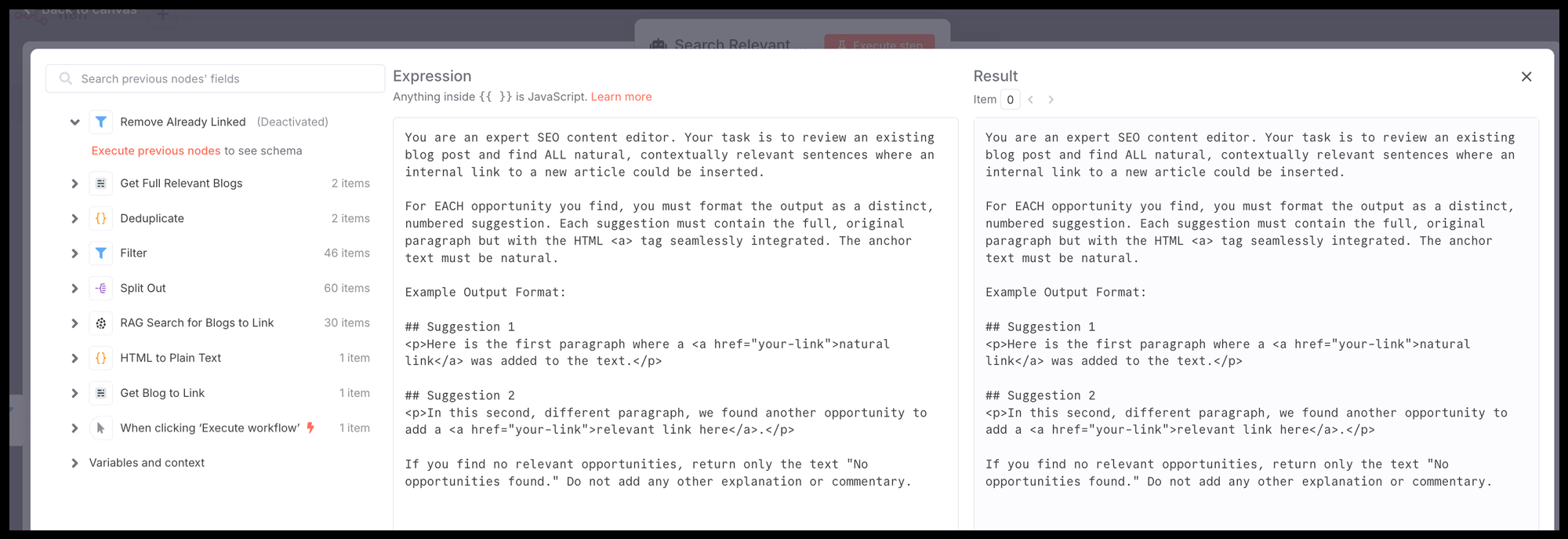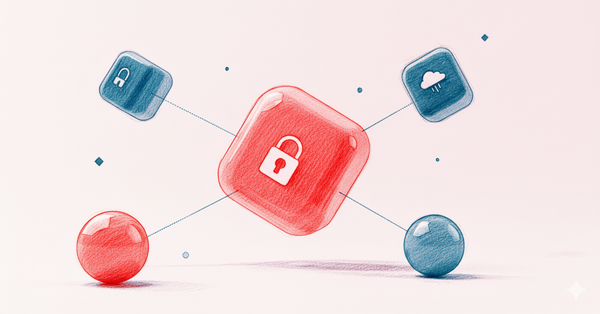Building smarter systems with AI Agents in n8n

Let's redefine what an AI Agent means for marketers. We're not building sci-fi assistants; we're engineering practical, automated systems for specific tasks. With n8n, an AI Agent isn't a fantasy; it's a powerful workflow you can build today.
It's a system that uses an AI brain to automate complex tasks, and to execute entirely new strategies at a scale that was previously out of reach.
This article will demonstrate the concept. We'll break down the four core components of the n8n AI-Agent node and show you why connecting AI to your marketing tools is a genuine game-changer.

Deconstructing the n8n agent
An AI Agent is a system. In n8n, this system is built around a specific node that has four critical components. Understanding these parts is the key to understanding its true potential.
1. The model (the brain)
The Model is the underlying Large Language Model (LLM) that provides the reasoning power. This is the brain of your operation, such as OpenAI's GPT-5 or Google's Gemini 2.5 Pro.
Why does this matter? Because you aren't locked into one provider. You can connect to virtually any model that has an API, simply by adding your credentials.
This lets you choose the right brain for the job: a powerful model for complex strategic analysis, or a faster, cheaper one for high-volume tasks.

2. The tools (the context, knowledge & abilities)
In an n8n AI Agent context, a tool is an add-on resource that the AI can refer to for specific information or functionality when responding to a request. The AI model can use a tool to interact with external systems or complete specific, focused tasks.
The most powerful example is giving the agent a tool to access your private knowledge base via Retrieval-Augmented Generation (RAG).
You can even give an agent other AI Agents or n8n Workflows as tools, allowing you to build teams of specialized agents that collaborate on complex tasks.
3. The memory (the conversation)
Memory is the agent's ability to remember previous conversations within a single workflow execution. This is only essential for building interactive chatbots or analyst agents where a back-and-forth conversation is required.
For many automated workflows, like a data classifier that runs on a schedule and produces a fixed output, memory is not needed and is left turned off.
4. The system instructions (the prompt)
This is the crucial component that ties the Model, Tools, and Memory together. Think of the System Instructions as the agent's core programming or its job description. It’s a detailed prompt where you define the agent's persona, its primary goal, the rules it must follow, and how it should format its output.
This is where your prompt engineering skills come into play. You give it direct orders like:
- Persona: Define the role the agent should adopt. (e.g., "You are an expert marketing data analyst," "You are a SEO/GEO specialist.")
- Goal: State its primary objective in a clear, single sentence. (e.g., "Your goal is to answer questions using only the documents provided," "Your goal is to summarize weekly performance reports.")
- Rules: Set the boundaries and constraints. (e.g., "Always use the 'SearchKnowledgeBase' tool first," "Never answer questions outside of the marketing topic," "Your tone should be professional and concise.")
- Output Format: Specify the exact structure of the final output. (e.g., "Return your final answer as a clean JSON object," "Provide the summary as a bulleted list," "Format the data as a CSV string.")

A well-written set of system instructions, aka Prompt Engineering, is what ensures your agent behaves predictably and delivers reliable, structured output every single time. It's how you direct the "brain" to use its "abilities" correctly.
From chatbot to workhorse: Why n8n agents beat ChatGPT alone
You get the same powerful "brain" as ChatGPT, but you're liberating it from the four walls of a manual chat window. By connecting it to your data and systems, you create an automated workhorse, not just a chatbot.
Using ChatGPT alone is like having a brilliant strategist locked in a room. You have to find documents, slide them under the door, and wait for notes to be slid back. Using an n8n Agent is like letting that strategist walk the halls, access the company file room, and talk to your team members directly.
Automated data inputs (no more copy-pasting)
With ChatGPT, you are the data fetcher. You have to manually find campaign data, copy it, and paste it into the chat with a prompt.
With an n8n Agent, the workflow can be scheduled to fetch its own data from any API (Google Ads, your CRM, a database) before the agent even starts thinking. The analysis is always based on live, real-time data.
Enhanced context with RAG (your knowledge base)
ChatGPT knows a lot about the general internet, but it knows nothing about your business.
An n8n Agent can be given access to your own private documents using Retrieval-Augmented Generation (RAG). You can connect it to a knowledge base of your internal marketing strategies, product specs, or past performance reports. This allows the agent to provide answers that are far more accurate and deeply relevant to your specific business context.
Automated actions (closing the loop)
ChatGPT gives you an answer, and the work stops. It's up to you to manually take that answer and do something with it.
An n8n Agent closes the loop. It can take its own output and immediately use a tool to perform an action: update a Google Sheet, send a Slack alert, create a Jira Story, or even add a negative keyword directly in Google Ads. It connects insight to action, automatically.
Multi-agent systems (your automated team)
You can chain multiple workflows and agents together to create a true automated team. For example, you could have a "Manager" agent that analyzes overall performance. If it detects an anomaly, it can trigger a specialized "PPC Analyst" agent to do a deep-dive investigation on the Google Ads account. This specialist agent can then report its findings back to the manager agent, which decides the next action.
What marketing tasks to automate using AI Agents?
This is where the theory becomes practice. It’s important to remember that an "agent" does not have to be a conversational chatbot. In fact, many of the most powerful agents are non-interactive workflows designed to run on a schedule, perform a very specific task, and never speak to a human directly.
The goal is to build smart systems that fits your exact needs. Let’s dive into a few use cases that show what’s possible.
Scalable data classification
Imagine a "search term classifier agent." Every day, it fetches thousands of new search terms from Google Ads. It then uses its Model to classify each term across multiple dimensions you define: Is it Branded or Non-Branded? Is it a good Product Fit? Is it from a Competitor? The output is a cleanly labeled list. From there, you can either send it to a Google Sheet for manual review or have the workflow automatically add irrelevant terms as negative keywords in Google Ads via the API.
Interactive analytics
Consider an "analyst agent" integrated with Slack. A marketing manager can ask directly in a channel: "How did our main campaigns perform last week?" The agent uses its Memory to understand the conversation, uses a BigQuery tool to query the company data warehouse for the performance data, and uses its Model to generate a concise summary. The manager can then ask a follow-up, like "Break that down by the top 3 campaigns," and the agent will know exactly what "that" refers to.
Proactive research & reporting
Set up a "competitor watch agent" to keep an eye on the market. Every Monday, it uses Google Search and other tools to find new blog posts from competitors. It then uses its Model to generate summaries. The workflow can then use multiple tools to distribute the intelligence: it sends a high-level alert to your #marketing Slack channel for immediate awareness, delivers a more extensive summary via email, and populates a Google Sheet with all the raw data, linking to it from both alerts.
The mindset shift: You're not a marketer, you're an automation architect
This technology fundamentally shifts your role. You move from performing repetitive, manual tasks to designing the intelligent systems that perform those tasks for you.
Ultimate customization: If you can imagine it, you can build it
Because n8n is a flexible, node-based platform, you are not trapped by the limitations of a specific software's features. You can connect to any service with an API and design any logic you can think of. Your ability to create a custom, valuable agent is limited only by your imagination, not the platform.
This is how you truly scale your impact. Instead of spending your day in spreadsheets, you can focus on high-level strategy, confident that your agents are handling the 24/7 execution with precision and speed.
Conclusion: Your first step towards automated intelligence
AI Agents in n8n are not just chatbots. They are automated systems that combine a model (brain), tools (context), memory (interaction), and instructions (prompt) and to execute tasks that go far beyond what's possible in a simple chat window.





